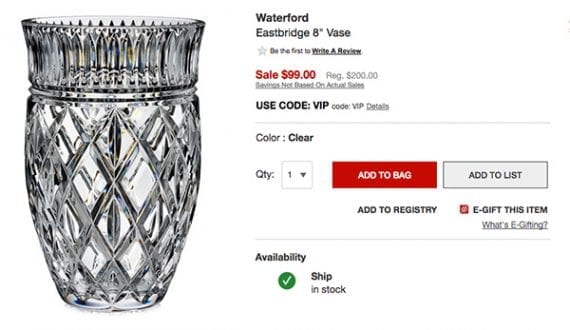Master shipping and you’ll just about master ecommerce. For new online retailers selling tangible products, the act of managing shipping — both in terms of actually packing orders and in terms of monitoring expenses — can make the difference between success and failure.
In the online retail context, shipping and order fulfillment is one of the most important operations new business owners must monitor and manage. What follows are five shipping tips for ecommerce beginners.
1. Know How Much Your Products Weigh
This tip — know how much your products weigh — may seem like stating the obvious, But when it comes to calculating shipping costs, it is not.
A product’s shipping weight may not be its actual weight. Consider two examples.

When you ship a fragile product like a glass vase, you layer it in packing materials that add to the product’s shipping weight.
First, imagine that you sell glass vases. Your products don’t weigh too much by themselves, perhaps a few pounds. But in order to safely ship glass from one end of the country to the other, you will need to layer your vases in packing materials like air pillows, foam, bubble wrap, and packing peanuts. These packing materials, a strong corrugated cardboard box, and even the tape all add to the shipment’s weight.
You need to know what your products weigh — glass vases in this example — when they are full, packed, and ready to ship.
Second, imagine you sell body pillows. Your products are very light, less than a pound, but they are relatively bulky. Your pillows could be subject to what shipping carriers call dimensional weight. Dimensional weight pricing charges shippers either the actual weight of a package or the average weight of a package of approximately the same size, whichever is greater.
If you estimated your shipping costs based on your pillow’s actual weight, you could, instead, be paying a lot more when you ship since dimensional weight pricing would cost more.
Know your products shipping weight, and use it to estimate shipping costs.
2. Use Flat Rate, Regional Shipping
Flat rate and regional rate shipping services are often the best choice for new ecommerce businesses. While flat rate and regional rate services are not always the least expensive way to ship, they are often very competitively priced and they are almost certainly among the easiest-to-understand shipping methods available.
These services also provide you with boxes, which can save you some money.
As your ecommerce business matures, you may want to grow into other shipping services (see point two in “6 Expensive Ecommerce Shipping Mistakes“), but in many cases beginning with flat rate and regional rate shipping is your best bet.
3. Use Shipping Software
The customer service counter at your local post office or UPS store is not the best place to buy shipping or print shipping labels. In fact, it is probably the worst place.
Even the smallest and newest ecommerce business will benefit from employing shipping software, even if this means nothing more than buying your postage online.
When you use shipping software, you will typically be able to purchase shipping or postage online at a discount. You will also enjoy many other features, including integration with marketplaces, better tracking, or some level of shipping automation.
4. The Box Represents Your Brand
When you send an order to a customer, you are not only sending a product, you are also telling customers something about your business.
Your product, your shipping label, and even your box all represent your brand. So don’t reuse boxes that have been sent to you.
Often new ecommerce business will get products shipped in from a number of suppliers. These new businesses recognize that boxes cost money, so there is a temptation to take a box your supplier sent you, slap a new label on it, and set it on.
Don’t do it. Reusing old boxes screams amateur and unprofessional. You won’t get another chance to make a first impression with your customer. Think of it this way. If spending $1.50 on a box increased your chance of getting a second order from this customers, would you buy the box?
5. Shipping Costs Are Part of Doing Business
You will lose money on some orders — the shipping cost will be more than you anticipated or your customer will return the product. New ecommerce business owners will sometimes argue with the shopper or want to charge for the return. But this is usually not a good idea.
Simply put, don’t worry about it. Shipping is a cost of doing business. On some individual orders, shipping can devour your profit. But rather than focusing on every one of these, aim to make the majority of your sales profitable. Think of shipping as a total for the week or month, rather than a line item on each and every order.
This is not to say that you should not know how shipping impacts individual orders, but rather it is a recommendation to manage shipping as a block, a cost of doing business.




